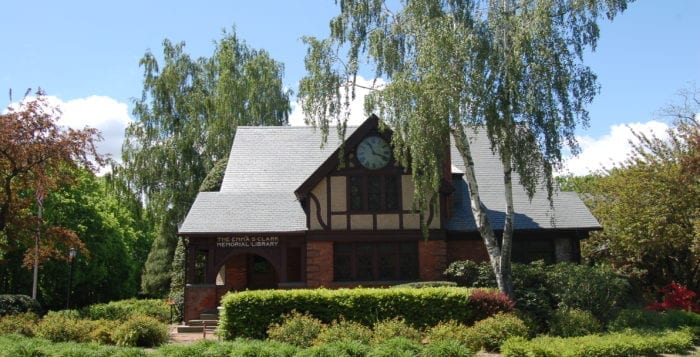Making Democracy Work: The power of our libraries
By Nancy Marr
I have heard many people remark that libraries have become irrelevant. E-books, Google, and the internet can answer all our questions, saving taxpayers money and freeing up buildings for other uses. But is that true?
In the eighteenth century, the first step toward sharing books came with subscription libraries, which were owned and managed by members who paid an annual subscription fee. The first of these in the United States, still extant and called the Library Company of Philadelphia, was established in 1790 by Benjamin Franklin and his friends, who created the Company by pooling their books to make them available to all the members of the Company. Other subscription libraries continued through the mid-nineteenth century for men who could afford to pay for them, and many are still in existence today.
Circulating libraries, often started by publishers of books that were more “popular” than those selected by the subscription libraries, made books available to people who could not afford to join a subscription library. The success of the subscription and circulating libraries probably retarded the growth of public libraries as we know them.
The social atmosphere of the subscription libraries satisfied many and others, women, in particular, could obtain the books about romance that they liked that they expected would not be available in public libraries. Community libraries grew in number, often starting as collections by wealthy readers. By 1935, libraries served 35 percent of the American people depending on local taxes or donations to maintain them.
Andrew Carnegie was the spark that spread libraries across the United States with his donations. In 1899 he granted 5.2 million dollars to the New York Public Library to build a network of 67 branch libraries in the five boroughs. The city provided sites for the libraries and enough money to provide staff. Small towns received $10,000 for each library and had to provide $1,000 a year for maintenance.
Although in principle libraries saw themselves as providing works of history, geography, and technical and scientific books, in the 1890’s libraries reported that 65 to 90 percent of books that were borrowed were works of fiction. The American Library Association (ALA), formed in 1876, offered a series of guides for small libraries.
The ALA, in response to demands to purge books that were anti-American in the Chicago library in 1939, issued a statement affirming the librarians’ right to choose what books should be in their collection. With the onset of Cold War anxieties, demands that librarians sign loyalty oaths split the ALA until the Supreme Court decided that Congress could ban only material “utterly without redeeming social importance.”
To support the public libraries and help them provide the best in library service, organizations like the Suffolk Cooperative Library System in New York were formed. It expands the services of the 51 member libraries in Suffolk, runs the inter-library loan system, digitizes newspapers and other documents, helps with resource sharing and technical proficiency, and supports services to special client groups.
Many local libraries have stepped into the role of community centers — providing meeting places for organizations, offering technical assistance to patrons with reference and computer questions, sponsoring book groups and classes in English, gardening, and cooking. Some libraries have hired part-time social workers and financial counselors, providing help to those who request it. Many have assembled useful tools for patrons to borrow, as well as seed collections for home gardens, kits and equipment for bird viewing and sports activities.
Recently, some taxpayers have asserted that they, and others who agree with them, should have more of a say about what books are available, and what subjects are taught in public schools. They support library and school board members who have the same opinion, and are likely to oppose passing the library and school budgets. Although early librarians, thinking they were protecting readers, chose only those books that they approved of, they now follow the position of the ALA against censorship and line their shelves with books chosen because of their literary value or value to patrons.
Libraries must rely on funding from taxpayers at an annual vote each spring. If you haven’t been to your library recently, make a visit and see how much it offers, if not to you, then to job seekers using the computers, to families who cannot afford to buy books or DVD’s, to elderly people relying on the book-delivery service, or to anyone looking for a book to read that will open a new road. Vote to support the budget and the library.
Nancy Marr is Vice-President of the League of Women Voters of Suffolk County, a nonprofit nonpartisan organization that encourages the informed and active participation of citizens in government and influences public policy through education and advocacy. For more information, visit www.lwv-suffolkcounty.org or call 631-862-6860.







